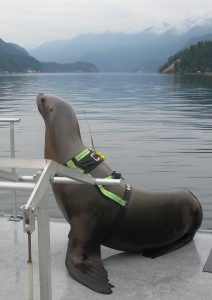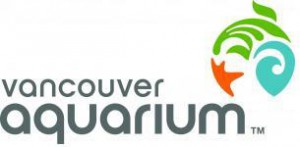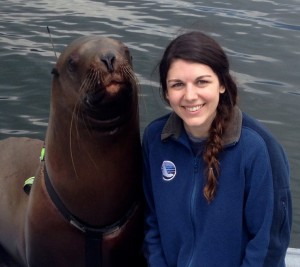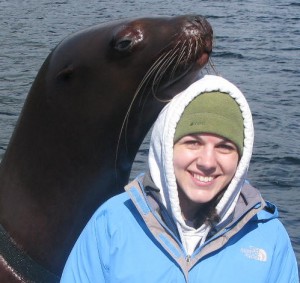Alumni
MSc 2015
E-mail: e.goundie@oceans.ubc.ca
Supervisor: Dr. Andrew Trites and Dr. David Rosen
Education: BSc – Marine Biology at the University of New England (2010)
Research Interests: Marine mammal physiology, ecology and conservation
Research Area: North Pacific Ocean, Alaska and British Columbia
How do changes in prey distribution and density affect the diving costs and foraging patterns of Steller sea lions?
Problem
Since the 1970’s, the population of Steller sea lions in western Alaska has declined drastically. In 1997, they were officially listed as endangered in the Endangered Species Act and still remian there today. The reason for this decline and lack of recovery remains unknown. One leading hypothesis is the nutritional stress hypothesis, which suggests that changes in prey availability and type, whether from overfishing by commercial fisheries or by changes associated with natural regime shifts, may be affecting the health of Steller sea lion populations. These changes in prey quantity and quality may limit the sea lions ability to consume enough prey to meet their daily energetic demands.
Foraging is a large component of a Steller sea lion’s activity budget. Changes in prey may cause sea lions to shift to more costly foraging strategies or to less preferred prey types. It is important to understand how these changes may affect a sea lions ability to forage efficiently and whether or not an energetic imbalance is created.

Research Questions
I am addressing the following questions:
1) What are the energetic costs associated with separate components of a foraging dive (transit to and from prey, remaining at a prey patch and actively foraging)?
2)How do prey encounter rate and depth affect foraging behaviour and diving costs?
I will be conducting my research at UBC’s Open Water Research Lab. Here we have 4 female Steller sea lions trained to perform voluntary dives in the open ocean. I will be using gas respiromety to measure diving metabolic rate in order to assess energy expenditure during different dive types. During dives, fish will be delivered to various depths to simulate different prey patches.
Presentations
- Goundie, E.T. 2014. Dining Decisions: Prey abundance affects dive behavior and foraging efficiency in Steller sea lions. Society of Experimental Biology Annual Meeting. Manchester, UK.
- Goundie, E.T. 2014. Dining or Dashing: Are Steller sea lions efficient foragers? Northwest Student Chapter of the Society for Marine Mammalogy Annual Meeting. Bellingham, WA.
- Goundie, E.T. 2013. The cost of a meal for Steller sea lions: Effects of depth and patch quality. BC Marine Mammal Symposium. Vancouver, BC.
- Goundie, E.T. 2013. A breakdown of dives and foraging strategies in Steller sea lions. UBC Fisheries Centre Symposium. Vancouver, BC.
- Goundie, E.T. 2013. The cost of dinner for Steller sea lions: A breakdown of dives and foraging strategies. Northwest Student Chapter of the Society for Marine Mammalogy Annual Meeting. Seattle, WA.
- Goundie, E.T. 2013. A breakdown of diving costs and a bioenergetic evaluation of foraging strategies in Steller sea lions (Poster). UBC Zoology Graduate Student Symposium. Vancouver, BC.
- Goundie, E.T. 2012. Energetic costs of diving in Steller sea lions: A total breakdown. BC Marine Mammal Symposium. Vancouver, BC.
Links
| I appreciate the help and support provided by: | ||||
 |
 |
|||
Photo credit: Carling Gerlinsky


